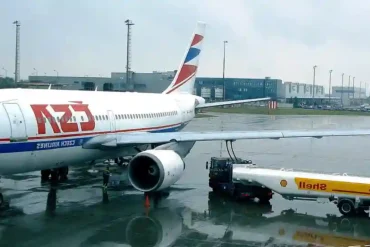As aviation enthusiasts, we often encounter terms related to aircraft accidents and incidents. Two such terms are CFIT (Controlled Flight Into Terrain) and uncontrolled flight into terrain. Let’s delve into the nuances of these concepts and understand how they differ.
Controlled Flight Into Terrain (CFIT)
CFIT refers to a scenario where the crew maintains control of the aircraft up to the point of impact with the ground. Despite being in control, the aircraft still collides with the terrain. Here are some key points about CFIT:
- Possible Causes:
- Lack of awareness of obstacles: The crew may not have been aware of a mountain, building, or other obstruction in their flight path.
- Misjudgment of altitude or approach path: Incorrect estimation of altitude during descent or approach can lead to CFIT.
- Loss of consciousness: If the crew becomes incapacitated (due to medical issues, hypoxia, etc.), the aircraft may continue on its last trajectory until impact.
- Example:
- The tragic American Airlines Flight 965 incident in Cali, Colombia serves as an example of CFIT. The crew took a wrong turn in mountainous terrain, leading to a fatal crash.
Uncontrolled Flight Into Terrain
Uncontrolled flight into terrain occurs when the pilot in command cannot recover the aircraft to steady and level flight before impact. Here are the distinguishing features of uncontrolled flight into terrain:
- Possible Causes:
- Mechanical or Structural Failure: A critical failure (such as engine failure, control surface malfunction, or structural damage) prevents the pilot from maintaining control.
- Poor Recovery from Stall or Spin: Improper recovery techniques from a stall or spin can result in uncontrolled flight.
- Accelerated Downward Spiral or Gyroscopic Maneuver: Extreme maneuvers can lead to loss of control.
- Incapacitation: If the pilot becomes incapacitated during flight, the aircraft may descend uncontrollably.
- Example:
- Vmc Crashes: Vmc (minimum control speed) refers to the minimum airspeed at which an aircraft can maintain controlled flight with one engine inoperative. Some accidents occur due to failure to maintain Vmc during engine failure.
- Air Midwest Flight 5481: This crash in Charlotte, North Carolina resulted from a control failure shortly after takeoff, leading to an uncontrollable airplane.
- Microburst Crashes: Microbursts are sudden downdrafts caused by thunderstorms. Aircraft encountering microbursts may experience rapid altitude loss, leading to uncontrolled flight.
In summary, while CFIT involves controlled flight until impact, uncontrolled flight into terrain results from factors preventing the pilot from maintaining control. As aviation enthusiasts, understanding these distinctions helps us appreciate the complexities of flight safety and accident prevention.


















